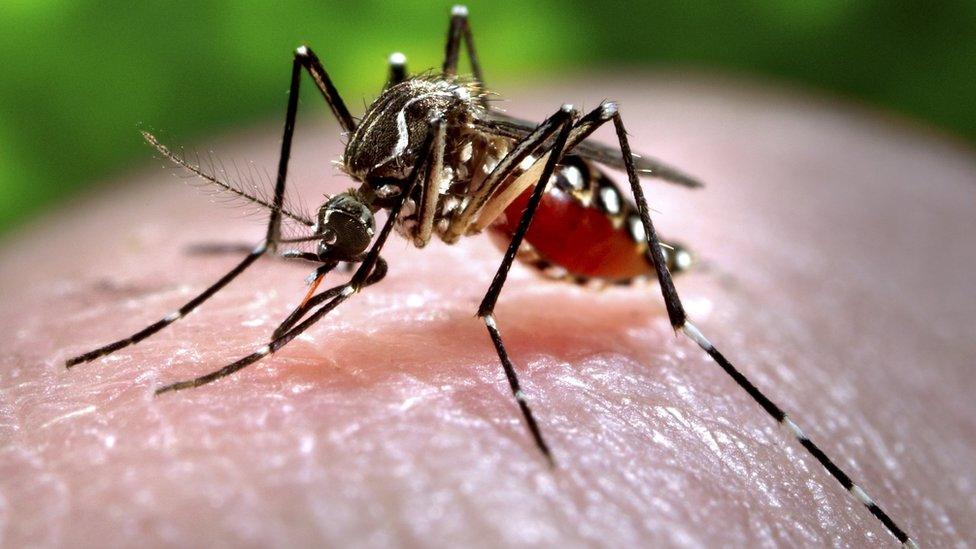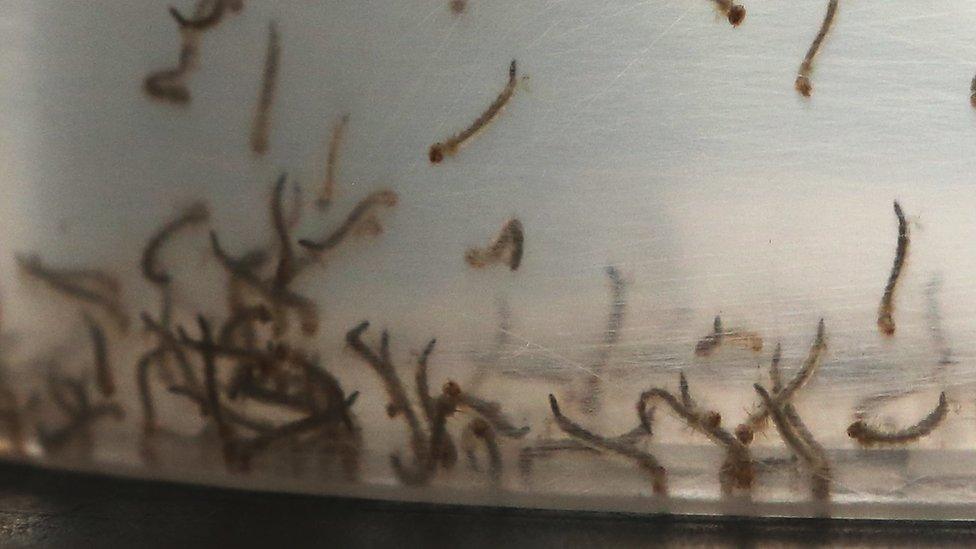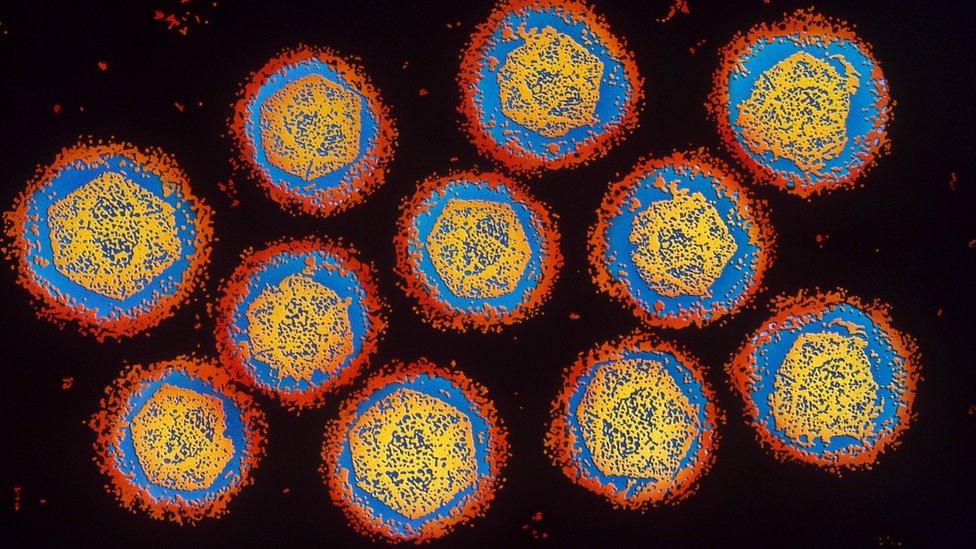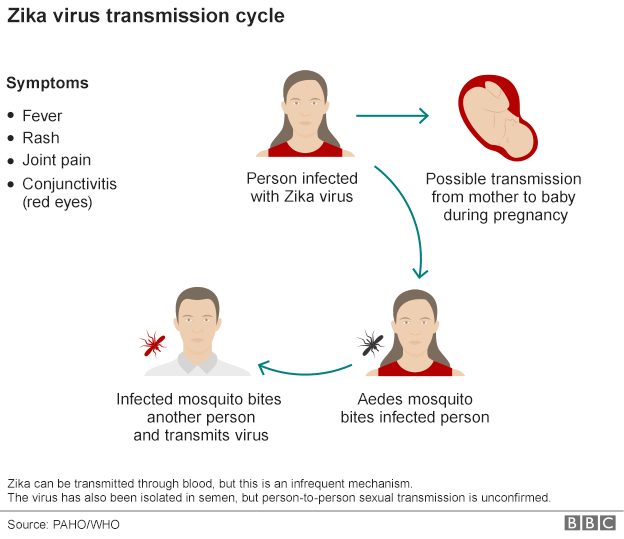Zika outbreak: The mosquito menace
- Published

This blood sucker might not be your best friend, but it loves you.
The mosquito, Aedes aegypti, is causing widespread fear in Brazil where it is spreading the Zika virus that has been linked to thousands of babies being born with birth defects.
So what do we know about it?

It loves our cities
This is not some jungle-dwelling insect that rarely comes into contact with people.
It is one of those animals, like cockroaches, pigeons and urban foxes, that thrives in built-up areas.
It does not need natural water sources to breed as it can lay eggs in the small and plentiful pools of stagnant water, such as gutters or flower pots, found in cities .

Mosquito larvae thrive in stagnant water
Cities like Singapore have big problems with the mosquito.
Prof Uriel Kitron, from Emory University, said: "Aegypti is really adapted well for urban areas.
"It is becoming more and more of an urbanised world and aegypti thrives - Brazil is an extreme example going from 20% to 80% urban in 70 years."
There's also plenty of food - us.

They harbour a bunch of diseases

Dengue fever is also spread by mosquitoes
Zika is currently getting all the attention, but Aedes aegypti has long been known as the yellow fever mosquito.
Yellow fever is a viral disease that can cause jaundice, bleeding and multiple organ failure in some cases.
And 390 million people, external are infected with the dengue virus each year, largely as a result of bites from Aedes aegypti.
Chikungunya, another virus causing alarm as it expands around the world, is also spread by the insects.
They do it by biting someone who is infected and then biting someone else.

More on the Zika crisis:

Only the females bite and they love human blood

Both the male and female mosquitoes feed off plant nectar. However, the females need a blood meal in order to produce eggs.
Two traits make them especially good at spreading disease.
First they feed almost exclusively on humans, so if they pick up a disease from one person, they are likely to pass it on with their next bite.
Other mosquitoes are less efficient spreaders as they feed off a variety of animals.
These particular blood suckers also drink little and often.
Rather than gorge their entire meal from one person and running the risk of being swatted they graze from multiple people making it easier to spread disease.
They are also active during the day so bed nets are less effective.

It's a lazy hitch-hiker

"They're amazing hitch-hikers, but they're lousy flyers," argues Prof Kitron.
The mosquitoes that carry malaria can fly for miles, but Aedes aegypti is pretty lazy by comparison.
It stays close to the area where it was born and 100m is a long way for it to fly.
Prof Kitron says: "But they're good at catching rides, their whole life cycle can take place in the water in a boat."
So despite its short flying distances it has managed to conquer the world.

It has a cousin that could bring Zika to Europe
Aedes aegypti lives in tropical and subtropical climates - it is why experts are worried Zika could spread across the Americas, a huge swathe of Africa as well as India and China.
However, the similar Aedes albopictus - or Asian Tiger mosquito - likes cooler more temperate areas.

It has been linked to outbreaks of chikungunya virus in Italy and France, external.
There are suspicions that it could also spread Zika virus, but it is not yet clear.

Out of Africa
Aedes aegypti exists in two forms or sub-species.
Aedes aegypti formosus is the original type found in Africa, which does not often come into contact with people and is not a major spreader of disease.
Aedes aegypti aegypti is the form that has spread around the world.
It probably arrived in the Americas from Africa after being transported around the ocean in the ships of European colonisers.
"Yellow fever outbreaks were known in Africa from around 1400 and the first confirmed cases, from the Yucatan, were documented in 1648," Dr Michael Bonsall from Oxford University said.
It is now found throughout tropical and subtropical regions around the globe.

Killed off once before

Eradication campaigns were successful in the Americas with 18 countries getting rid of the insect by 1962.
But insecticide resistance plus a lack of political will led to the mosquito rebounding, external.
But now far more people live in its preferred urban home and a similar achievement would require a huge effort.
Follow James on Twitter, external.
- Published28 January 2016

- Published31 August 2016

- Published28 January 2016

- Published28 January 2016
